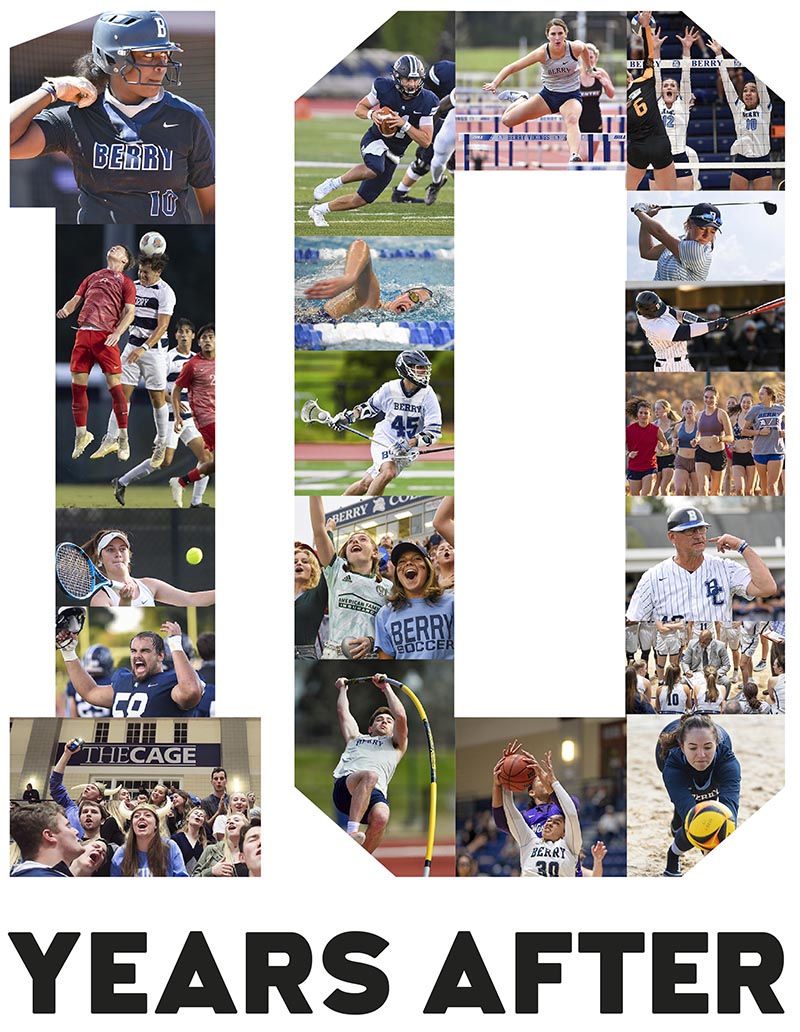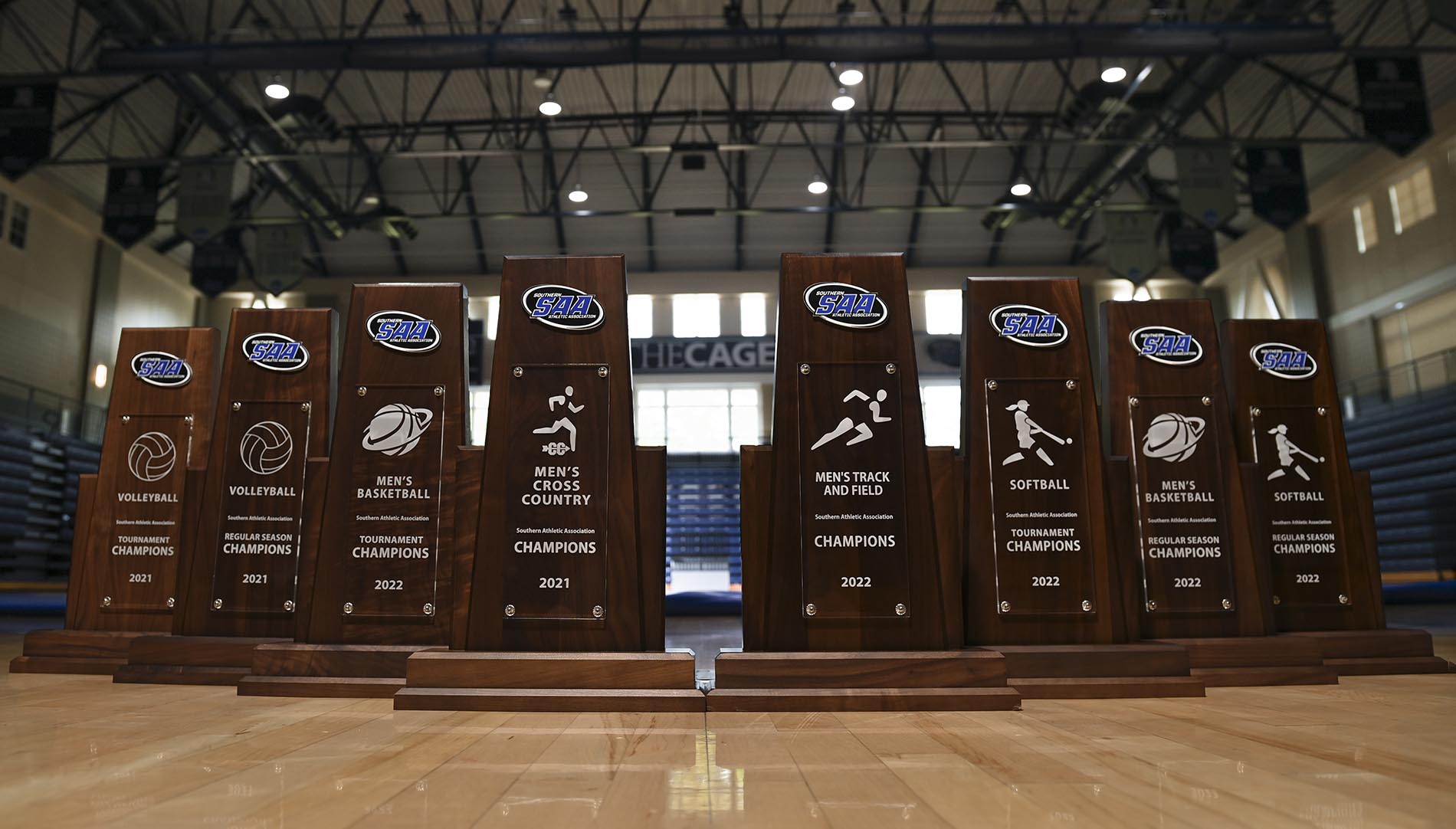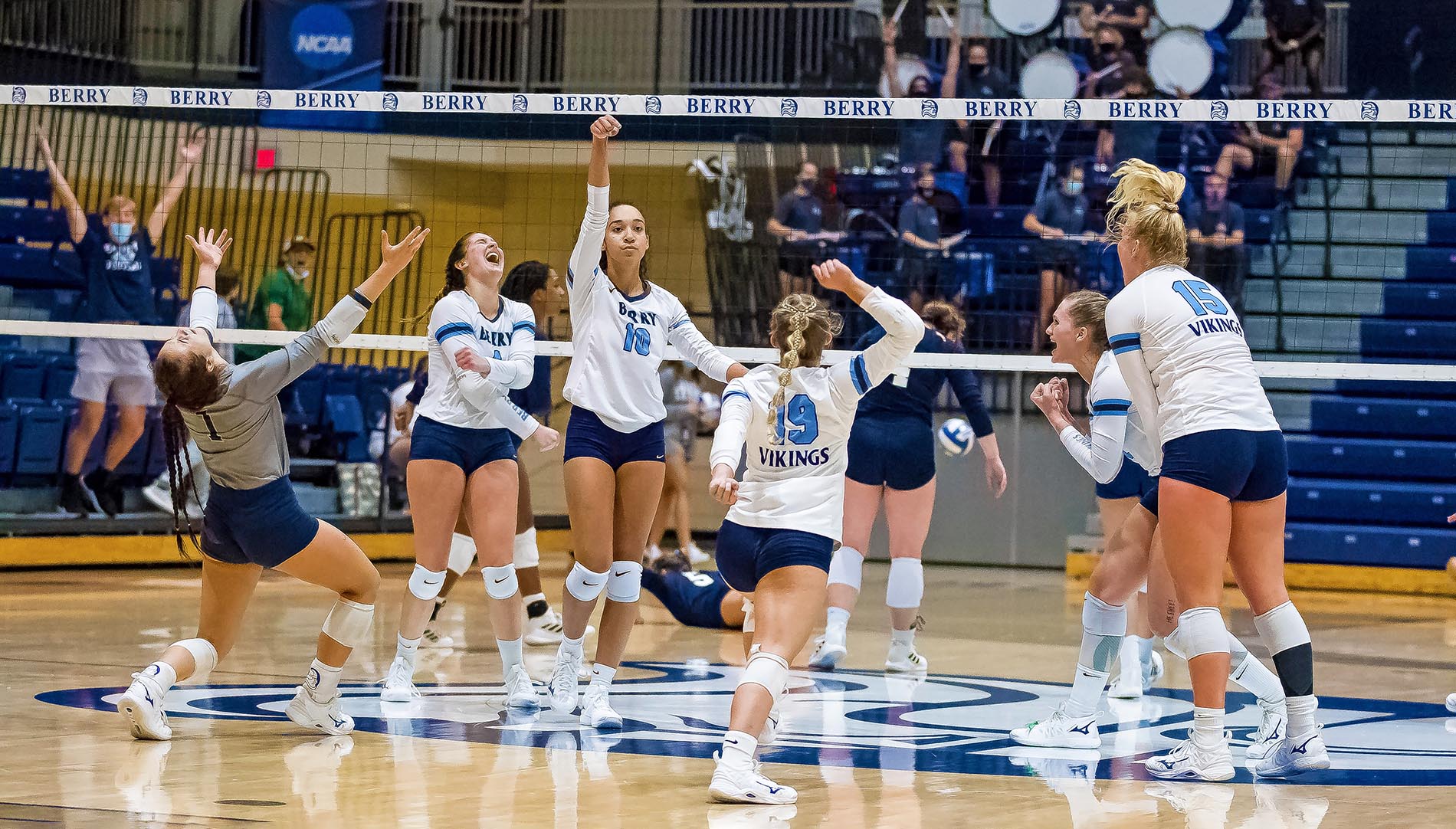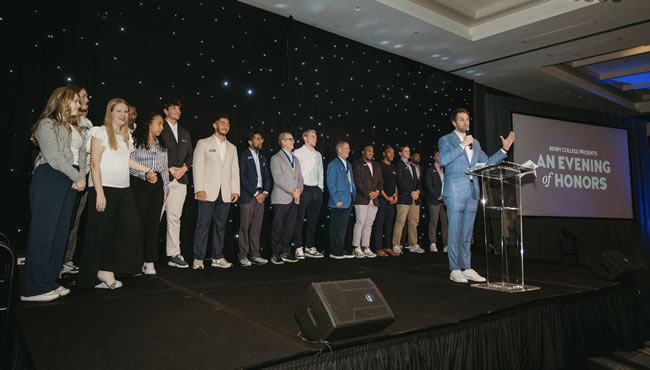
By Stephen Briggs
Berry joined the Southern Athletic Association as a founding member in the fall of 2012. It was a pivotal moment for the college as it marked the promise of better days ahead after a bruising and contested decision in 2009 to move from the NAIA to the NCAA. Part of that promise was how the change would benefit Berry’s institutional reputation and aspirations.
Today, the Vikings are firmly established as a competitive member of NCAA Division III, and the fit seems apparent. But a decade ago, the move was more controversial than obvious.
The Vikings had a proud history of athletic success in the NAIA, including national championships and a still-fresh visit to the baseball World Series. Joining DIII meant the end of scholarship awards based on athletic ability and participation, allowing instead increased focus on financial aid for academics and need. It also meant a four-year prohibition from postseason tournaments due to NAIA and DIII reclassification rules. Needless to say, it was a vexing period for Berry athletes and coaches.
The context
In 2003, the college considered the possibility of affiliating with the NCAA. Over a period of years, there had been a significant decline in the number and academic quality of institutions making up the NAIA. A committee of the Berry Board of Trustees determined that any decision should be deferred until a new athletic facility could be built.
In 2007, anticipating the opening of the Steven J. Cage Athletic and Recreation Center, the board agreed to reconsider the issue. A campus committee focused on seven criteria:
• Ability to grow the varsity sports program
• Contribution to campus culture
• Ability to compete athletically
• Consistency with Berry’s educational philosophy
• Quality of the student-athlete experience
• Opportunity to improve the visibility of Berry
• Needed resources
The committee examined opportunities in the NAIA as compared to Divisions I, II and III of the NCAA. The study process was thorough but did not lead to a consensus. In fact, while the faculty voted in favor of a move to DIII, the coaches had a strong preference for the NAIA or DII, and a straw poll of the Student-Athlete Advisory Committee indicated no support for DIII, with a preference instead for the NAIA or DI.
Adding to these concerns, Berry would join DIII as an independent school with no conference affiliation. The Southern Collegiate Athletic Conference Berry had hoped to join was in the throes of change, and it would be two years before Berry was invited to help establish the Southern Athletic Association.

The results
With 10 years of perspective, we now can see clearly the fruits of that thorny decision and can celebrate the trajectory of the athletic program. Berry has thrived in the SAA, a conference recognized nationally for the strength of both its academics and its athletics. Last year, for the first time, the Vikings won the all-sports trophy for the conference – the SAA Commissioner’s Cup – based on regular-season and tournament finishes. The volleyball and softball teams both advanced to the Elite Eight in DIII national tournament competition and ranked in the top 10 of their sports.
Taking a step back, however, how do these successes measure up to the criteria established by the study committee 15 years ago?
Growth of varsity sports
As one of its founding priorities, the SAA promotes varsity athletic participation through a wide range of diverse opportunities. Since joining DIII, Berry has added nine sports: football, softball, men’s and women’s lacrosse, men’s and women’s swimming and diving, men’s and women’s track and field, and beach volleyball. The number of Berry students competing as varsity athletes has increased from approximately 360 each year to 560.
Contribution to campus culture
Before the opening of the Cage Center, Berry was saddled with a “suitcase-campus” reputation on weekends. That term has not been heard in years, and a large part of the increased vibrancy on campus has been due to the growth of varsity sports, along with our increased emphasis on Berry’s residential experience and other efforts.
Ability to be competitive athletically
Since joining the SAA, Berry has won 29 regular-season championships and 18 conference tournaments, with 17 postseason appearances in eight years of eligibility (excluding the pandemic year of 2020-21). Softball, volleyball and football have been especially dominant in the conference. In addition, individual student-athletes have qualified to compete in national championships in men’s and women’s cross country, golf, and swimming and diving, as well as in women’s track and field.
That’s a remarkable run for a college new to DIII. Also, a number of Berry teams have achieved top-20 national rankings, noteworthy given that DIII is the largest division in the NCAA with approximately 450 member institutions. DIII competition is stiff, but Berry is making its name known.
Berry student-athletes also have achieved notable success as Athletic and Academic All-Americans in the decade of DIII competition. Across seven sports, a total of 29 Vikings have earned 44 All-American awards, including seven who won two awards and four who were triple winners. Volleyball alone had three triple and three double award winners. Equally impressive, a total of 30 Viking athletes have earned 43 Academic All-American awards across 11 sports. In women’s golf, four Vikings earned the award three times as did a women’s soccer player.

All four of Berry’s most recent Goldwater Scholars – the top national award for science, engineering and mathematics students – were student-athletes, with three serving as captains of their teams.
Consistency with Berry’s educational philosophy
A chief principle of the SAA is that members integrate athletics into the whole of a student’s residential educational experience. Berry student-athletes have comparable GPAs to other students, graduate from Berry at slightly higher rates, pursue a wide variety of majors and participate actively in the LifeWorks Program. All four of Berry’s most recent Goldwater Scholars – the top national award for science, engineering and mathematics students – were student-athletes, with three serving as captains of their teams.
Recent Athletic All-Americans have gone on to pursue postgraduate degrees in the fields of medicine and veterinary medicine, while others work in auditing, data analytics, environmental consulting, sports communication, nursing and teaching. Who says academics and athletics don’t mix?
Quality of the student-athlete experience
When Tony Kunczewski – Coach K – arrived on campus as our inaugural football coach, someone asked how he would define success at Berry. His answer: when a member of the team was elected SGA president. Fittingly, senior offensive lineman Teddy Palmer (17C) was elected to that role the same year that Berry won the first of its five-straight regular-season football championships.
Our experience this last decade is that Berry’s student-athletes share fully in the life of campus. Take Alec Leeseberg, another 2017 football graduate, for example. Alec served as a lab coordinator for creative technologies, designed a hologram application for his iPhone, and starred in Cabaret, singing and dancing with as much agility as he played nose guard on the defensive line.
Opportunity to improve the visibility of Berry
The study report completed in 2008 asserted that the visibility of the athletics program contributes to the public’s perception of a college. Berry and the other colleges in the SAA are all members of the Annapolis Group, which comprises the nation’s leading residential colleges. Approximately 90% are in DIII.
Competing against these colleges week after week in a variety of sports has elevated Berry’s profile and reputation at a pace that has exceeded expectations. Winning conference championships and competing in the Elite Eight at nationals help shine a spotlight, but a college is known more generally by the company it keeps. Berry keeps good company.
 Needed resources
Needed resources
The opening of the Cage Center made feasible the move to DIII by providing an exemplary facility for varsity basketball, volleyball, and swimming and diving. Since then, we have added Valhalla, home to football, lacrosse, and track and field; the Kay Williams softball field; and the Rome Tennis Center at Berry College. We also have improved our baseball and soccer facilities and Richards Gymnasium. All of this was made possible independent of student tuition and fees by the generosity of alumni, parents, benefactors and other partners who contributed construction and renovation funds.
This fall, we received a substantial new gift from Steve Cage (74C) to help construct a premier four-court beach volleyball facility, and we also are currently raising funds to relocate and expand a championship facility for our track and field throwing events. (I’d be pleased to talk with you about either of these giving opportunities!)
Looking back
Ten years after our first fall season in the SAA, it’s hard not to be thrilled with how things have turned out. But let’s not take it for granted. The years of change (2008-2013) were harsh. Then-Athletic Director Todd Brooks and his leadership team admirably implemented a contested decision. Coaches encouraged their athletes through several years without any prospect of postseason play. And many highly competitive athletes honored Berry by staying through the transition years though it meant sacrificing their own potential All-American recognition. They, too, helped bear the cost of propelling Berry toward the promise of better days that we now have realized.
Ten years after, we remain grateful to these student-athletes, coaches and leaders for their exceptional efforts on behalf of our team. They epitomized what it means to Be Berry.



